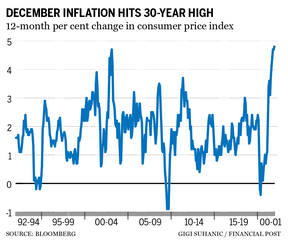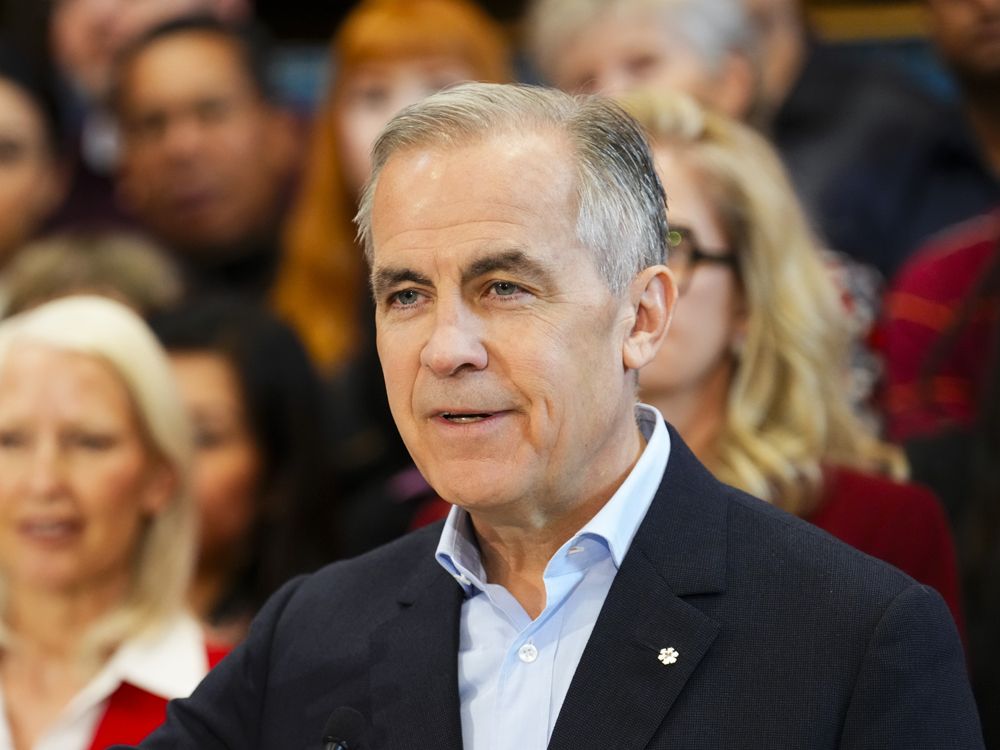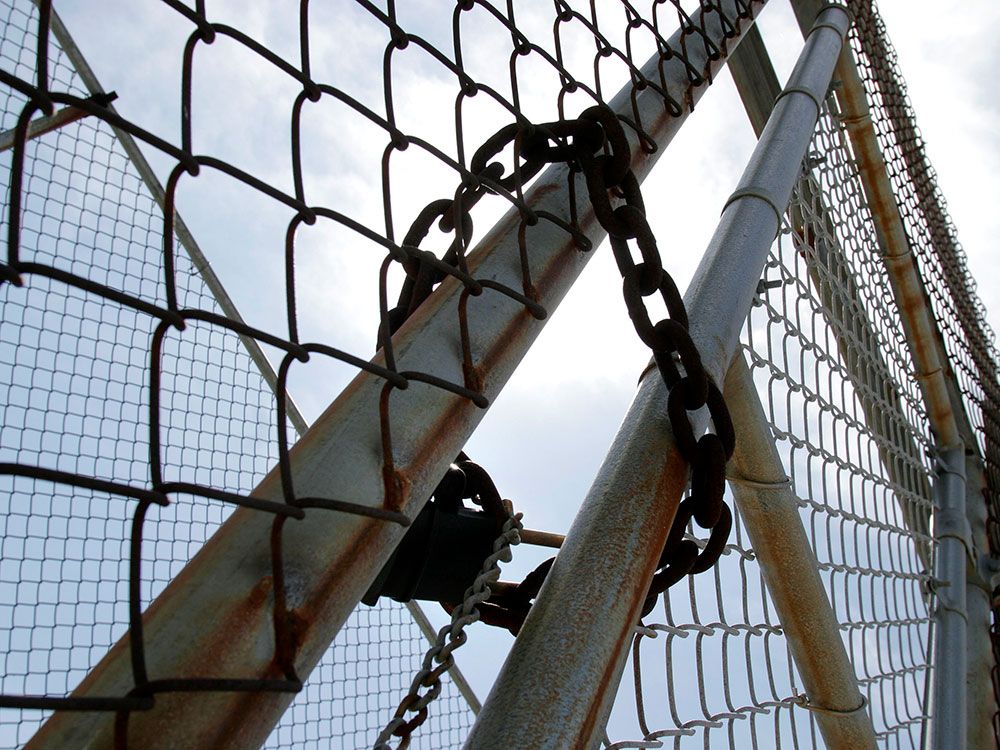Kevin Carmichael: Inflation rises to 4.8%, pushed higher by increases in the cost of almost everything
Article content
Canada’s broadest measure of inflation climbed 4.8 per cent in December from a year earlier, the largest increase in more than 30 years, raising the odds that the Bank of Canada will raise interest rates next week to offset gathering cost pressures.
Advertisement
This advertisement has not loaded yet, but your article continues below.
Article content
Statistics Canada’s consumer price index (CPI), which the central bank uses as a guide for where to set its benchmark lending rate, was pushed higher by increases in the cost of almost everything, as all of the eight major components that the agency uses to group the many items it includes in its price basket posted gains last month.
Notably, food prices surged 5.2 per cent in December as poor weather in major farming regions around the world limited the supply of fresh fruit. The drought that afflicted the Prairies over the summer showed up in the price of bakery goods, which jumped 4.7 per cent from a year earlier, Statistics Canada reported on Jan. 19.
Upward pressure on shelter costs remained intense, stoked in December by a year-over-year rise of 9.3 per cent in prices of home insurance, a jump that Statistic Canada attributed to higher prices for building supplies and, possibly, an increase in the number and frequency of severe weather events.
Advertisement
This advertisement has not loaded yet, but your article continues below.
Article content

The three “core” measures of inflation that the Bank of Canada watches to get a clearer feel of the trend in prices all posted increases as well, making it difficult for policy-makers to justify their current interest-rate setting of zero, which was put in place when the Bank of Canada was worried the pandemic would cause deflation. The optics of raising interest rates during another wave of pandemic-related shutdowns will complicate the central bank’s deliberations, but the intensity of the price data appears to leave them little choice.
Governor Tiff Macklem and his deputies are currently debating what to do, and will release their decision on Jan. 26, along with a new economic outlook that almost certainly will be positive, given substantial evidence of strength in the labour market and exports at the end of 2021. By almost all counts, Canada’s economy had lots of momentum heading into the Omicron wave and should be able to push through the latest headwind without great difficulty.
Advertisement
This advertisement has not loaded yet, but your article continues below.
Article content
“The across-the-board increase in the core inflation measures leads us to think the (Bank of Canada) will err on the side of acting to damp inflation despite new lockdowns,” said Veronica Clark, an economist at Citigroup Capital Markets Inc. in New York, who predicts a quarter-point cut next week, followed by additional quarter-point cuts in April and October.
That trajectory would put the benchmark rate at one per cent by the end of the year, a rate that still would be low by historical standards.
“The economic impact of near-term Omicron disruptions is expected to be significant but largely temporary and existing government support programs will keep a floor under household incomes, backstopping consumer demand,” said Claire Fan, an economist at Royal Bank of Canada. “Against that backdrop, the Bank of Canada is expected to begin hiking interest rates soon, with our own base-case for an April hike but with any meeting, including next week’s, a significant possibility.”
Advertisement
This advertisement has not loaded yet, but your article continues below.
Article content
The CPI actually decreased 0.1 per cent from its level in November, as gasoline prices eased amid the latest wave of COVID-19 infections. It’s unlikely many people noticed, however, as fuel costs still were 33 per cent higher than December 2020. Surging commodity prices are a big part of the post-pandemic inflation. Excluding energy, the CPI rose 3.8 per cent from a year earlier, still high, but less extreme than the all-items number.
Macklem said at the end of 2021 that he was uncomfortable with the pace at which inflation was accelerating, and the latest reading will do nothing to ease that discomfort. He had assumed a convergence of idiosyncratic forces that had disrupted global supply of goods would fade, and the burst of inflation that came in the aftermath of the COVID recession would dissipate.
Advertisement
This advertisement has not loaded yet, but your article continues below.
Article content
That still could happen, but inflation has now persisted long enough to begin changing the public’s expectations of where prices are headed. More than two-thirds of the respondents to the Bank of Canada’s quarterly survey of businesses said they saw the CPI exceeding three per cent over the next two years, the central bank reported earlier this week. The risk now is that inflation becomes a self-fulfilling prophecy.
Advertisement
This advertisement has not loaded yet, but your article continues below.
Article content
Three per cent is an important psychological barrier because it’s the outer limit of the Bank of Canada’s comfort zone for inflation. It actually tries to keep the CPI advancing at an annual pace of about two per cent, the midpoint of the range that begins at one per cent on the low end and extends to three per cent at the high end.
Inflation has now exceeded three per cent since April, by far the longest stretch of off-target price increases since the central bank began using the CPI to guide its policies in 1991, which is the last time inflation was this close to breaching five per cent.
“Inflation is likely to come down over the next year, but getting it there will require tighter financial conditions and rate hikes by the Bank of Canada,” said James Marple, an economist at Toronto-Dominion Bank. “The process is likely to begin this year but bringing inflation back to two per cent is likely to be a multi-year project.”
Financial Post
• Email: kcarmichael@postmedia.com | Twitter: carmichaelkevin
Advertisement
This advertisement has not loaded yet, but your article continues below.
Canada inflation hits highest level since 1991
2022-01-19 15:59:54






